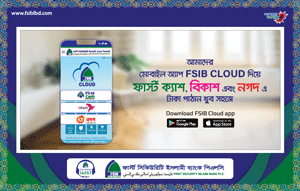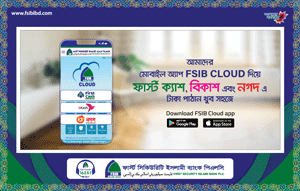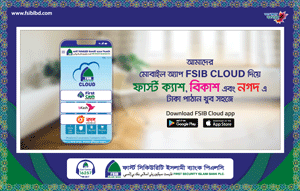The rollout of 5G in Bangladesh presents a significant opportunity for the nation to enhance its digital infrastructure and align with global technological advancements.
With its rapidly growing population of mobile and internet users, the country has made substantial progress in telecom development.
However, achieving widespread 5G adoption requires overcoming infrastructural, financial, and policy challenges.
The telecom industry in Bangladesh serves as a critical driver of economic growth and digital inclusion.
With 190.86 million mobile subscribers as of October 2024, the market is dominated by four key players: Grameenphone, Robi Axiata, Banglalink, and Teletalk.
Grameenphone leads with over 84.83 million subscribers, followed by Robi at 57.88 million and Banglalink at 41.63 million.
Teletalk, the state-owned operator, lags behind with 6.52 million users, but it has played a pioneering role in initiating 5G services in a limited capacity.
Mobile internet penetration is high, with 124.88 million users driving growth in data consumption and digital services.
However, much of this usage remains concentrated in urban areas, highlighting a significant rural-urban digital divide
Globally, 5G networks are rapidly gaining traction, with advanced economies such as the United States, China, South Korea, and European nations leading the charge.
For example, South Korea, the world’s first country to launch commercial 5G in April 2019, has seen adoption rates soar to over 30% of its population by 2023.
The United States and China have similarly prioritised 5G, with widespread infrastructure deployment and significant investments in research and development.
China, in particular, has positioned itself as a global leader, accounting for over 60% of the world’s 5G base stations.
These countries benefit from substantial financial resources, robust regulatory frameworks, and advanced technological ecosystems.
In contrast, Bangladesh is in the early stages of 5G adoption. Teletalk launched limited 5G services in urban pockets in December 2021, but broader coverage is yet to materialise.
This delay can be attributed to high spectrum prices, limited infrastructure readiness, and the high costs associated with deploying 5G networks.
The Bangladesh Telecommunication Regulatory Commission (BTRC) conducted its first 5G spectrum auction in 2022, with operators like Grameenphone and Robi acquiring frequencies.
However, the total spectrum allocated for 5G remains lower than the global average, constraining operators’ ability to deliver high-speed, low-latency services
Bangladesh’s efforts to achieve 5G success hinge on addressing key infrastructural challenges.
The deployment of 5G requires a dense network of small cells, fibre-optic backhaul, and advanced antennas to ensure seamless coverage.
However, the country’s existing infrastructure, largely designed for 2G and 3G, is inadequate to meet the demands of 5G.
Power supply issues further compound this problem, with frequent outages disrupting network operations.
Operators are making incremental investments to upgrade their networks, but the costs are substantial, and returns are uncertain in a price-sensitive market like Bangladesh
Affordability remains a critical barrier to widespread 5G adoption.
Although Bangladesh has some of the lowest mobile data costs globally, the price of 5G-enabled devices remains prohibitively high for much of the population.
With a significant portion of the population living below the poverty line, affordability challenges risk exacerbating the digital divide.
In comparison, countries like India and China have managed to reduce device costs through local manufacturing and economies of scale, enabling faster 5G adoption among their populations.
The potential benefits of 5G in Bangladesh are immense.
The technology promises to enhance industrial productivity, improve healthcare delivery through telemedicine, and transform education through e-learning platforms.
IoT applications, such as smart agriculture and energy management, could drive innovation in key sectors of the economy.
For instance, South Korea has leveraged 5G to implement smart city initiatives, while China’s manufacturing sector has seen significant productivity gains through 5G-enabled automation. Bangladesh can draw lessons from these examples to develop sector-specific use cases that align with its economic priorities
The government’s role in fostering 5G adoption cannot be overstated.
Policies that reduce spectrum costs, incentivise private investment, and streamline regulatory processes are essential.
Greater collaboration between the government and telecom operators is necessary to align objectives and overcome obstacles.
Subsidies for rural infrastructure development and tax incentives for 5G equipment imports could accelerate deployment.
Cybersecurity is another critical consideration in the 5G era.
The increased connectivity and data volumes associated with 5G networks make them more vulnerable to cyber threats.
Developing robust cybersecurity frameworks and investing in advanced security solutions are essential to protect users and maintain trust in the digital ecosystem.
Bangladesh can benefit from international collaborations in this regard, leveraging expertise from global leaders in telecom security.
A global comparison underscores the urgency of 5G adoption for Bangladesh to remain competitive in the digital economy.
While advanced economies are moving toward 6G research, developing nations like India, Vietnam, and Indonesia are making rapid strides in 5G deployment.
India’s 5G launch in October 2022 has already reached over 150 cities, supported by domestic manufacturing and significant government backing.
Indonesia is focusing on smart agriculture and disaster management as key use cases for 5G.
These examples highlight the diverse applications of 5G and the need for tailored strategies to maximize its benefits
For Bangladesh, achieving 5G success requires a multi-pronged approach.
Operators must continue to invest in infrastructure while exploring innovative business models to make services affordable.
The government must create an enabling policy environment that balances revenue generation with long-term growth objectives.
Collaboration between stakeholders, including the private sector, academia, and international partners, is essential to drive innovation and build a skilled workforce for the 5G era.
5G represents a transformative opportunity for Bangladesh to enhance its digital capabilities and achieve Smart Bangladesh.
While significant challenges remain, targeted investments, supportive policies, and strategic collaborations can help overcome these barriers.
By learning from global leaders and adapting their strategies to local contexts, Bangladesh can position itself as a regional leader in digital innovation, unlocking new possibilities for its people and economy.












